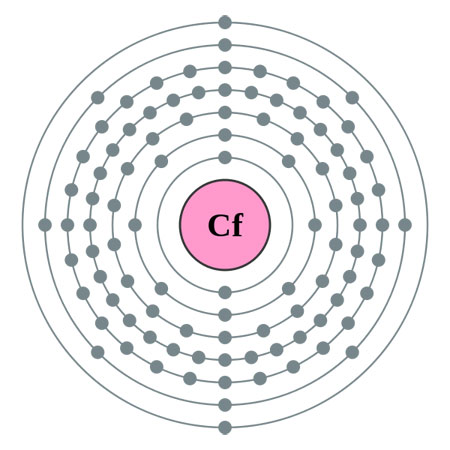californium

Californium, which has the following number of electrons per shell: 2, 8, 18, 32, 28, 8, 2
Californium (Cf) is a radioactive, metallic element of the actinide series, and also a transuranic element. It has the atomic number 98. It was first made in 1950 by Stanley Thompson, Kenneth Street, Albert Ghiors,o and Glenn Seaborg, using the 60-inch cyclotron at the Lawrence Berkeley Laboratory, by bombarding an isotope of curium, 242Cm, with alpha particles.
Of the 20 isotopes of californium that have been synthesized, ranging in mass number from 237 to 256 the most stable are 251Cf (half-life 898 years), 249Cf (half-life 351 years), 250Cf (half-life 13.08 years), and 252Cf (half-life 2.65 years). Sufficient californium has been made that quantities of it have been seen with the naked eye and weighed. The only compounds of californium to have been made and studied are californium oxide (Cf2O3), californium trichloride (CfCl3), and californium oxychloride (CfOCl). The only californium ion that is stable in aqueous solution is the californium (III) cation.
Californium-252, with a half-life of of 2.65 years, is a very strong emitter of neutrons. One microgram of it releases 170 million neutrons per minute, so that it presents a particular biological hazard. Because of the difficulty of producing californium in anything but minute amounts its use is limited. However, it has found application as a neutron startup source in some nuclear reactors, in cancer treatment, and in certain types of detection equipment.


